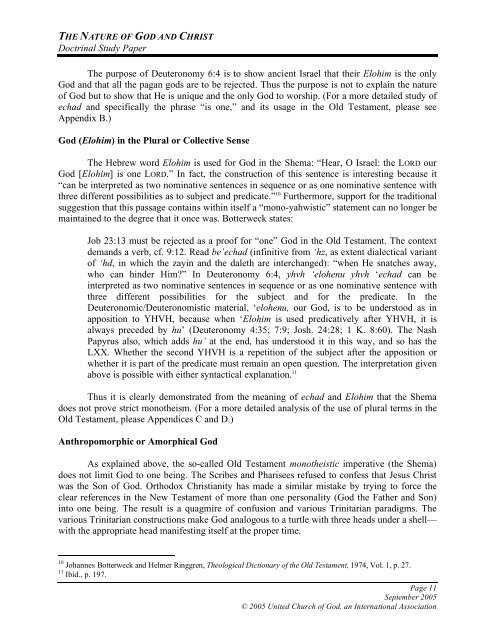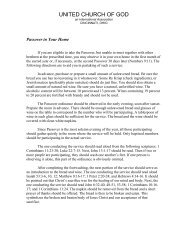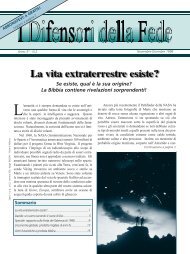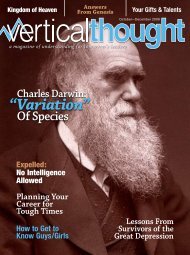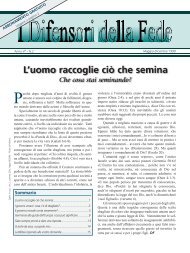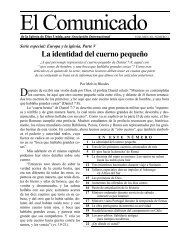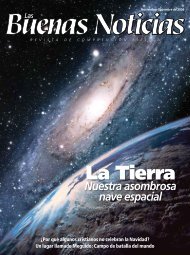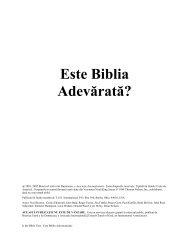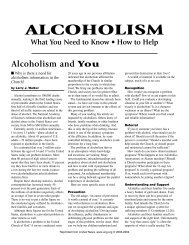The Nature of God and Christ - Members Site - United Church of God
The Nature of God and Christ - Members Site - United Church of God
The Nature of God and Christ - Members Site - United Church of God
- No tags were found...
You also want an ePaper? Increase the reach of your titles
YUMPU automatically turns print PDFs into web optimized ePapers that Google loves.
THE NATURE OF GOD AND CHRISTDoctrinal Study Paper<strong>The</strong> purpose <strong>of</strong> Deuteronomy 6:4 is to show ancient Israel that their Elohim is the only<strong>God</strong> <strong>and</strong> that all the pagan gods are to be rejected. Thus the purpose is not to explain the nature<strong>of</strong> <strong>God</strong> but to show that He is unique <strong>and</strong> the only <strong>God</strong> to worship. (For a more detailed study <strong>of</strong>echad <strong>and</strong> specifically the phrase “is one,” <strong>and</strong> its usage in the Old Testament, please seeAppendix B.)<strong>God</strong> (Elohim) in the Plural or Collective Sense<strong>The</strong> Hebrew word Elohim is used for <strong>God</strong> in the Shema: “Hear, O Israel: the LORD our<strong>God</strong> [Elohim] is one LORD.” In fact, the construction <strong>of</strong> this sentence is interesting because it“can be interpreted as two nominative sentences in sequence or as one nominative sentence withthree different possibilities as to subject <strong>and</strong> predicate.” 10 Furthermore, support for the traditionalsuggestion that this passage contains within itself a “mono-yahwistic” statement can no longer bemaintained to the degree that it once was. Botterweck states:Job 23:13 must be rejected as a pro<strong>of</strong> for “one” <strong>God</strong> in the Old Testament. <strong>The</strong> contextdem<strong>and</strong>s a verb, cf. 9:12. Read be’echad (infinitive from ‘hz, as extent dialectical variant<strong>of</strong> ‘hd, in which the zayin <strong>and</strong> the daleth are interchanged): “when He snatches away,who can hinder Him?” In Deuteronomy 6:4, yhvh ‘elohenu yhvh ‘echad can beinterpreted as two nominative sentences in sequence or as one nominative sentence withthree different possibilities for the subject <strong>and</strong> for the predicate. In theDeuteronomic/Deuteronomistic material, ‘elohenu, our <strong>God</strong>, is to be understood as inapposition to YHVH, because when ‘Elohim is used predicatively after YHVH, it isalways preceded by hu’ (Deuteronomy 4:35; 7:9; Josh. 24:28; 1 K. 8:60). <strong>The</strong> NashPapyrus also, which adds hu’ at the end, has understood it in this way, <strong>and</strong> so has theLXX. Whether the second YHVH is a repetition <strong>of</strong> the subject after the apposition orwhether it is part <strong>of</strong> the predicate must remain an open question. <strong>The</strong> interpretation givenabove is possible with either syntactical explanation. 11Thus it is clearly demonstrated from the meaning <strong>of</strong> echad <strong>and</strong> Elohim that the Shemadoes not prove strict monotheism. (For a more detailed analysis <strong>of</strong> the use <strong>of</strong> plural terms in theOld Testament, please Appendices C <strong>and</strong> D.)Anthropomorphic or Amorphical <strong>God</strong>As explained above, the so-called Old Testament monotheistic imperative (the Shema)does not limit <strong>God</strong> to one being. <strong>The</strong> Scribes <strong>and</strong> Pharisees refused to confess that Jesus <strong>Christ</strong>was the Son <strong>of</strong> <strong>God</strong>. Orthodox <strong>Christ</strong>ianity has made a similar mistake by trying to force theclear references in the New Testament <strong>of</strong> more than one personality (<strong>God</strong> the Father <strong>and</strong> Son)into one being. <strong>The</strong> result is a quagmire <strong>of</strong> confusion <strong>and</strong> various Trinitarian paradigms. <strong>The</strong>various Trinitarian constructions make <strong>God</strong> analogous to a turtle with three heads under a shell—with the appropriate head manifesting itself at the proper time.10 Johannes Botterweck <strong>and</strong> Helmer Ringgren, <strong>The</strong>ological Dictionary <strong>of</strong> the Old Testament, 1974, Vol. 1, p. 27.11 Ibid., p. 197.Page 11September 2005© 2005 <strong>United</strong> <strong>Church</strong> <strong>of</strong> <strong>God</strong>, an International Association


